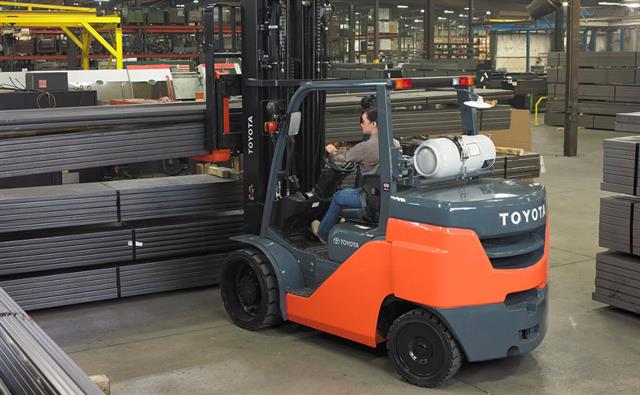Don’t Neglect Forklift Safety Checks
Since safety is priority one, it is essential that forklift operators and fleet managers don’t neglect regular safety checks of their forklifts. It’s essential because checking the condition of the lift on a regular basis assures longevity for the lift, a safe driving experience for the forklift operator, and protection from harm of co-workers.
There are obvious differences between forklifts that rely on propane to energize them or electricity that keeps them moving. So, there are slight differences in the maintenance requirements of each. Yet, there are similarities too.
For example, both style of forklift require fuel level checks, fork and tire inspections, and a review of the condition of all safety devices.
Fluid Levels
In this case in safety checks, the forklift operator is responsible for checking the oil, water, and hydraulic fluid levels of his lift. If levels are dropping too quickly, make a note of it and inform the fleet manager.
Other things that need to be inspected in this category of safety checks include hydraulic hoses and mast chains. Inspect the hoses for leaks, cracks and defects. Assure that the tension of the mast chain is proper using a stick or a pole. Don’t use your hands.
Tires
Inspect the tires for damage and air pressure.
Forks
An essential part of safety checks is to check the forks to assure that they’re in good condition. Make sure that the heel and top clip retaining pin are properly in place and secure.
Safety Devices

Inspecting a forklift.
(Courtesy: Ken Pretell at flickr.com)
What’s so beneficial of today’s forklifts is that they have an array of safety features. Some of these features were not part of older forklifts. It is essential that the forklift operator inspect these components to assure that they’re in good working order. This would include the seatbelts and direction signals as well as any lighting that attracts attention of co-workers who may be working in areas of the warehouse frequented by forklifts. Make certain that the proper decals and stickers are on the machine.
As mentioned earlier, there are innate differences between electric and propane forklifts. It is the obligation of the forklift operator to be aware of these differences and do a proper analysis of whichever style of lifts he drivers.
Electric Forklift Considerations
The obvious difference between the electric lift and the propane lift is the battery. When checking the battery it is imperative that you wear protective gear to protect your eyes and skin. Chemicals in the battery as well as exposed wires can cause injury if protective gear is not worn.
The checking routine should include:
• The cable connectors to assure that they aren’t worn and damaged.
• Battery restraints should be secure.
• Assess hood latches to assure they’re tight.
• Checking the electrolyte levels.
Propane Forklift Considerations
Obviously, the difference between the electric forklift and the propane lift is the propane tank. Drivers of this style of lift should be certain that they regularly check the tank to assure it’s secure and correctly connected. You should also check to see that the pressure relief valve of the tank is pointing up and the hoses and connectors are tight, not damaged, and not leaking. Assure that the tank restraint brackets are secure and in good condition and that the propane tank is not dented or cracked. Make certain that the tank fits within the profile of the lift. In addition, check for leaks on the floor under the lift and if you see them, clean them up and dry the floor.
If you discover problems with your lift, notify the fleet manager so that he can remove it from operation for servicing.
(Source: liftow.com)

